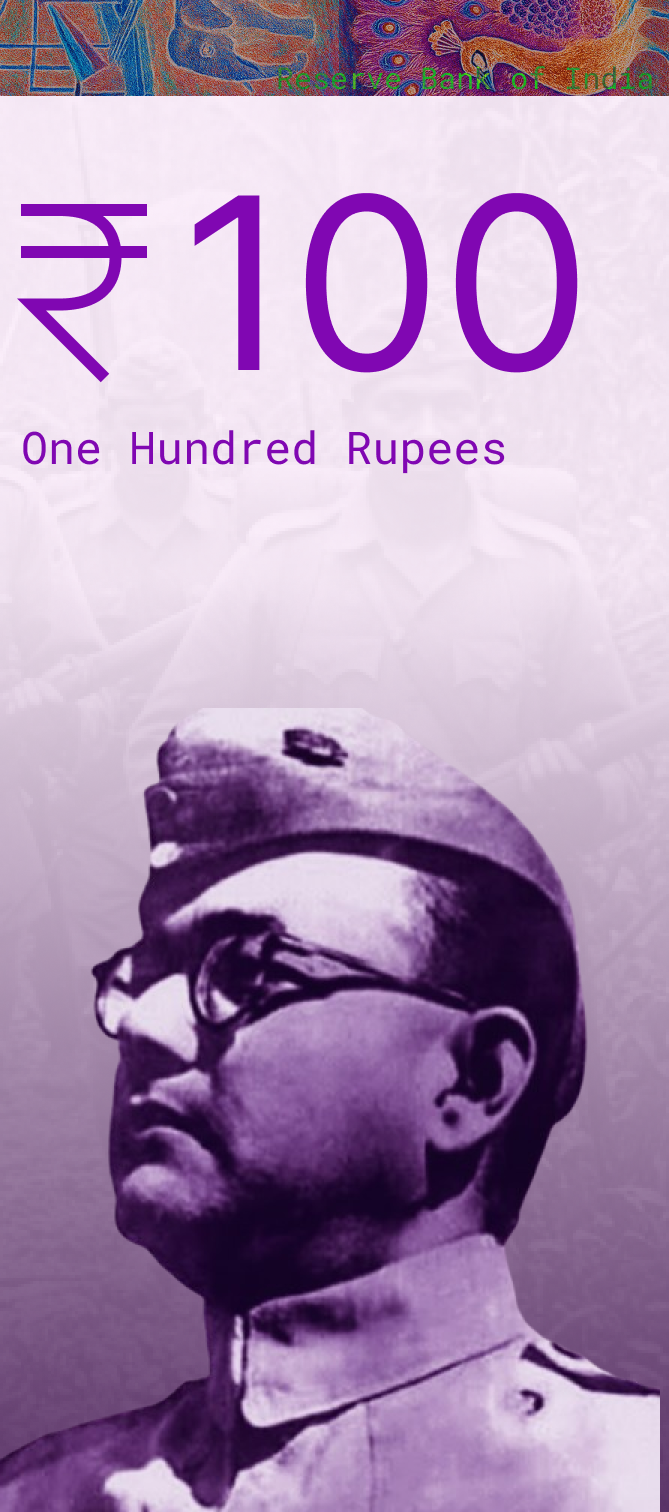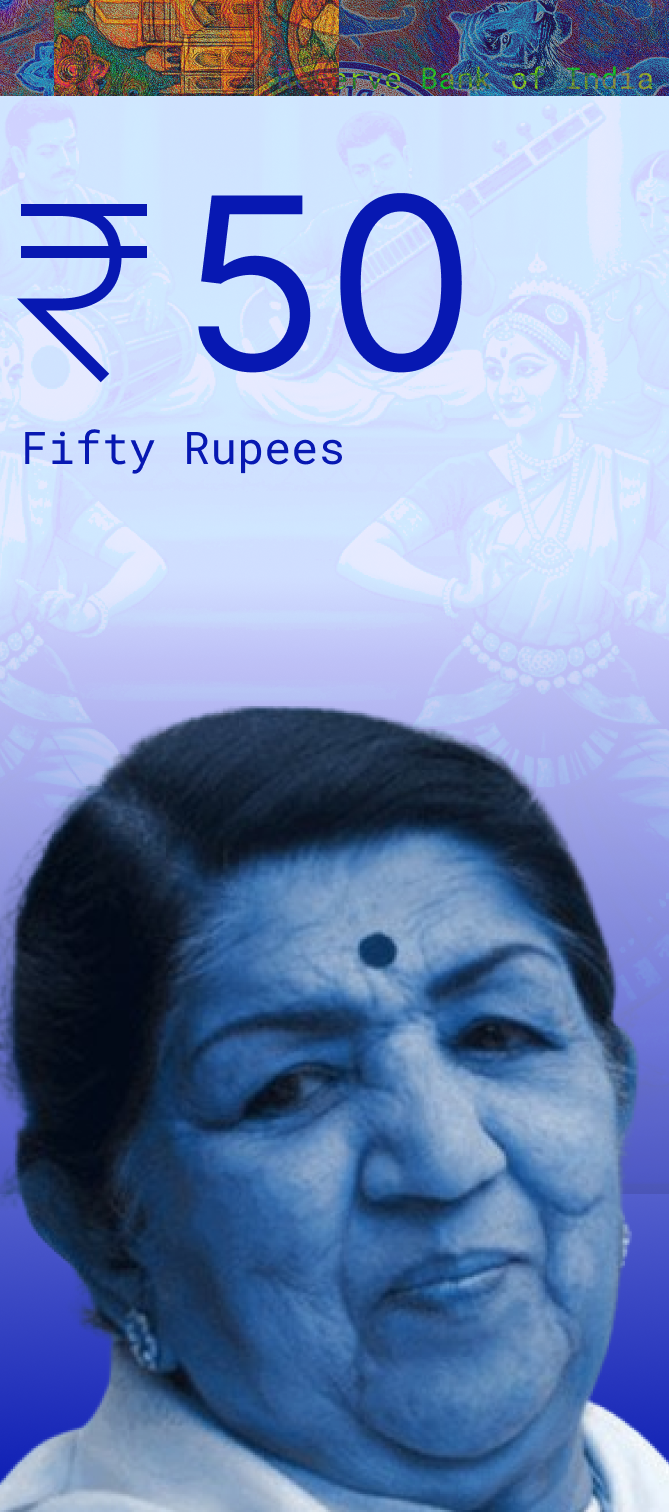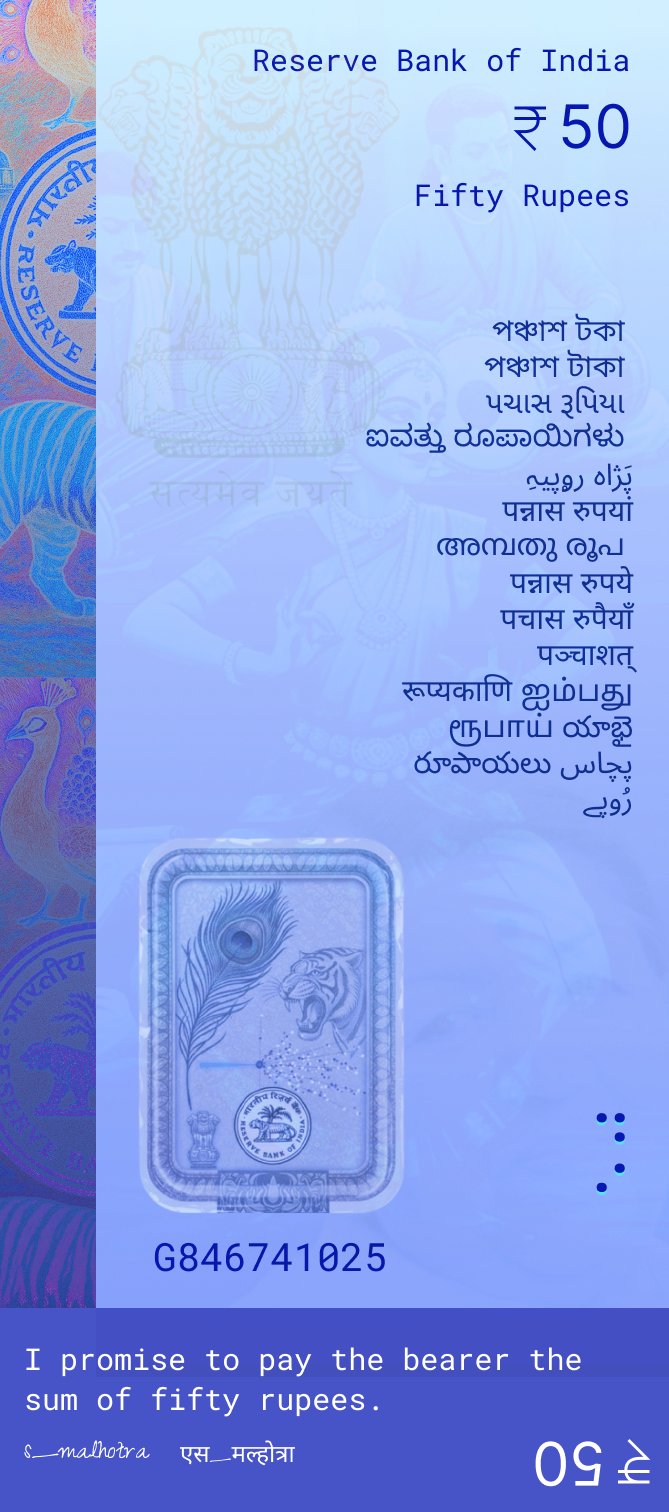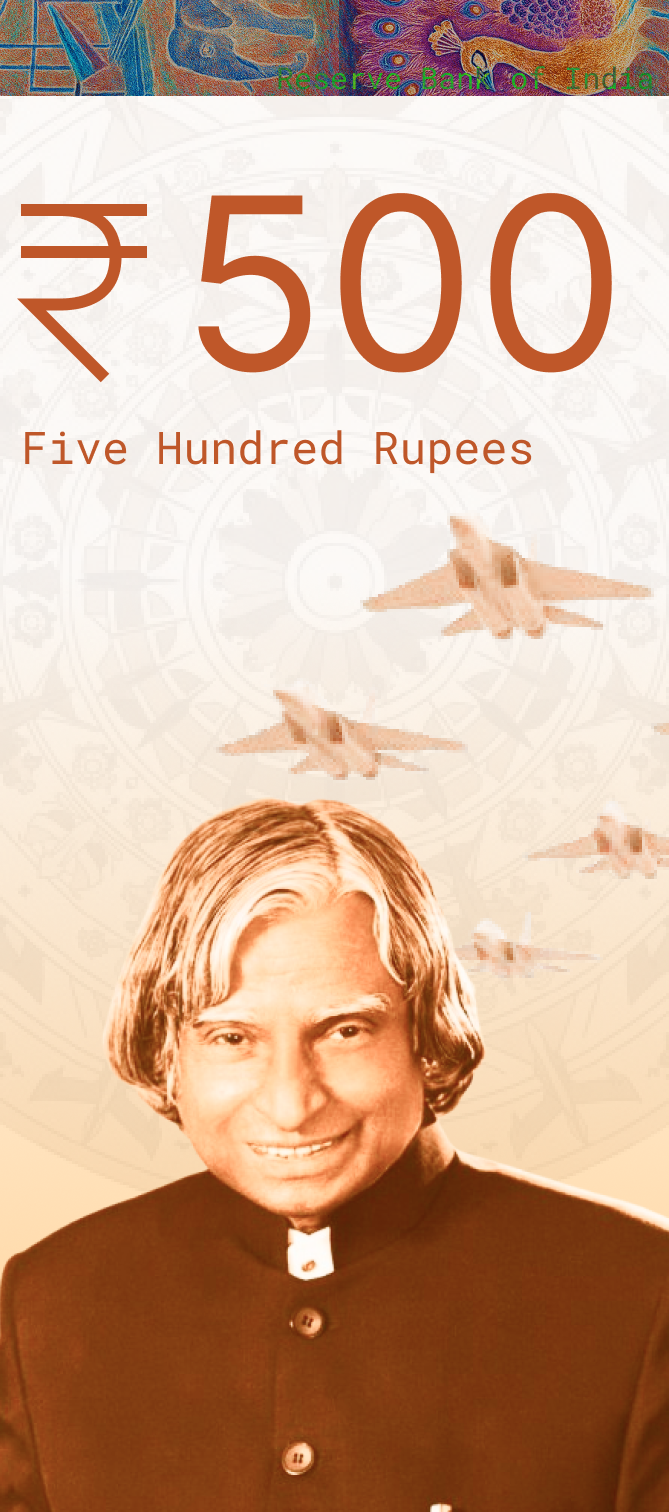A New Generation of Currency












Currency notes are more than monetary instruments—they are powerful storytelling devices that circulate through millions of hands daily, carrying narratives of identity, heritage, and aspiration. Each note becomes a canvas for communicating values, honoring achievements, and inspiring future generations. This design reimagines currency as a medium for cultural dialogue and contemporary role modeling.
Unlike traditional mediums that require active engagement, currency enters the lives of people naturally—in pockets, wallets, and transactions. This ubiquity creates unprecedented opportunities for representation. When individuals from diverse backgrounds, professions, and contributions are featured on currency, they become part of the daily visual landscape, normalizing excellence and achievement across all domains of human endeavor.
By featuring figures like Lata Mangeshkar (music), A.P.J. Abdul Kalam (science), and Subhas Chandra Bose (leadership), this currency celebrates excellence beyond political or traditional domains. These selections inspire a generation to see themselves reflected in diverse fields—from arts and sciences to innovation and social change. Every transaction becomes a subtle reminder that greatness takes many forms, and that the next generation can find their role models not just in history books, but in their hands during everyday moments. When young people hold currency featuring scientists, artists, and leaders who look like them or share their aspirations, it plants seeds of possibility—transforming each note into a story of "this could be you."
The vertical orientation further amplifies this storytelling potential. With more visual real estate dedicated to portraits and symbolic elements, each note becomes a small gallery—a moment of recognition and connection. The format invites viewers to pause, examine details, and connect with the stories embedded in the design. In a world where attention is fragmented, currency design that embraces storytelling creates meaningful touchpoints, reminding us of who we honor, what we value, and the stories we choose to tell about ourselves.
Every element of these currency notes has been meticulously chosen to balance aesthetic beauty, functional clarity, and inclusive accessibility. The design system employs a carefully curated palette, modern typography, and innovative accessibility features.
Each denomination features a distinct, vibrant color that serves both aesthetic and functional purposes—creating instant recognition while celebrating India's rich visual heritage.
The monochromatic portraits integrate seamlessly with each note's color theme, creating visual harmony while maintaining the distinctive character of each denomination.
A dual-font system ensures optimal legibility and modern aesthetic while supporting clear hierarchy and functional requirements.
Numerals — Inter: Inter provides exceptional clarity for numerals at all sizes. Its geometric precision ensures instant recognition of denominations, even from distances or at angles. Used for primary denominations: ₹ 100
Text — Roboto Mono: Roboto Mono's monospaced character provides uniform spacing that enhances readability for secondary information. Its technical precision complements Inter's geometric clarity. Used for secondary text: One Hundred Rupees
Inclusivity is embedded at every level of the design. Tactile Braille elements enable visually impaired users to identify denominations through touch, making currency truly accessible to all.
Universal Design Principle: The vertical format provides optimal space for Braille placement without disrupting the visual design. Braille dots are positioned strategically along the note's edges, ensuring easy access while maintaining aesthetic integrity. This integration transforms currency from a visual-only medium into a multi-sensory experience, honoring the principle that good design serves everyone.
Each denomination features a prominent, vertically-oriented portrait of an iconic Indian figure, rendered in monochrome tones matching the note's color palette. The vertical format allows these portraits to dominate the design, honoring these figures as national icons.
The iconic foreheads and facial features serve as both aesthetic elements and security features—difficult to replicate accurately, they provide both beauty and protection against counterfeiting.
The design prioritizes clarity through a thoughtful approach that ensures accessibility while maintaining visual elegance. Every element is designed to communicate effectively across cultural boundaries.
The decision to adopt a vertical orientation—similar to currency designs in Canada, Switzerland, and other modern economies—represents a fundamental shift in currency design philosophy. This orientation offers numerous advantages over traditional horizontal layouts.